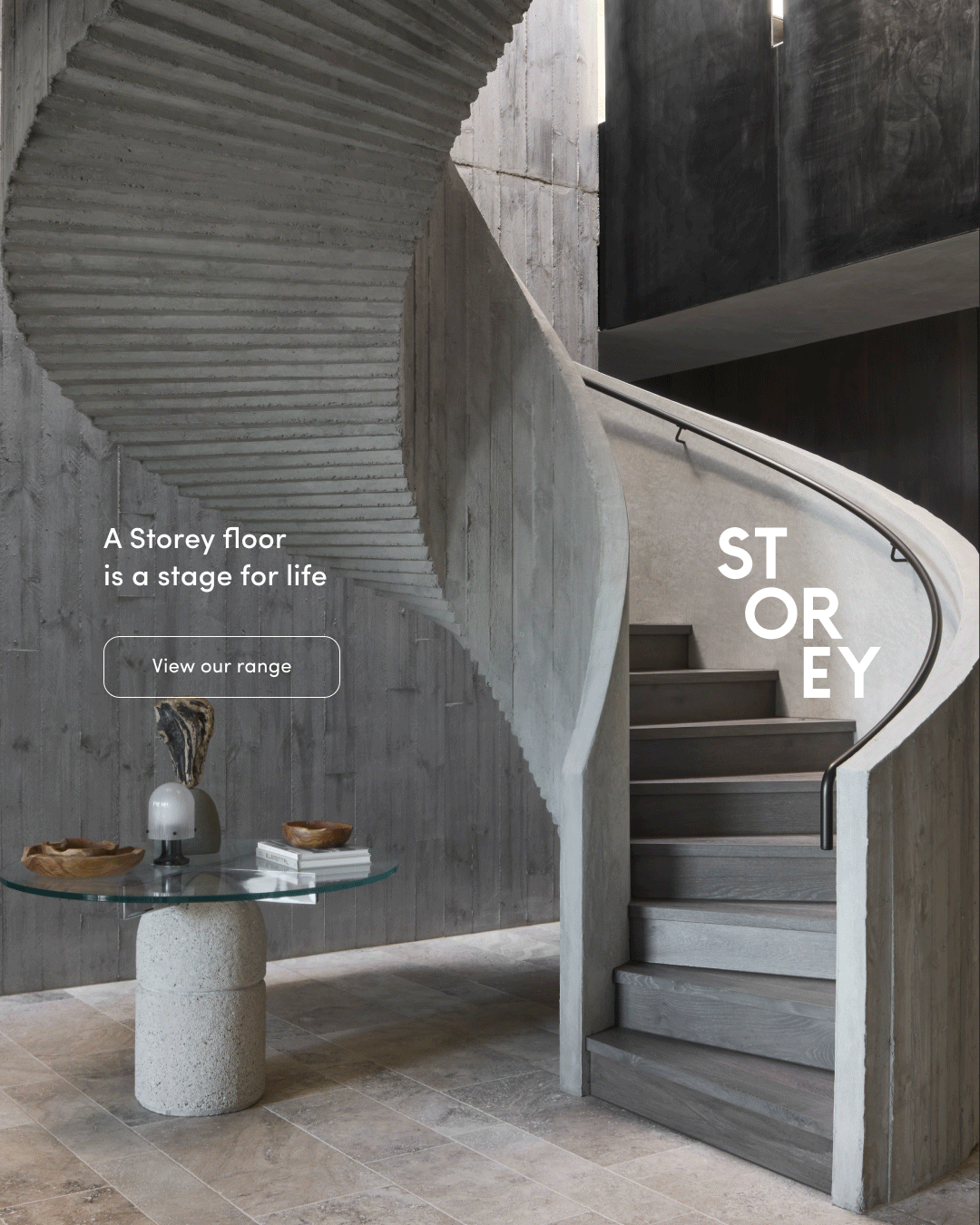
Fairhaven Beach House by Wardle
Designed and built more than a decade ago, Fairhaven Beach House by Wardle is an exercise in controlled and uncontrolled perspective.
The property’s irregular geometries mimic and contradict the fluidity of the surrounding ocean view, which it tries to capture, and the coastal terrain, which it imprints upon. Architecture will always have to negotiate this contradiction of building upon nature– its impact on the environment an effort in appreciating it. At Fairhaven Beach House, the turning, tilting and choreographing of surfaces and planes attempts to balance this conflict by creating a house that reflects the landscape that inspired it.
The house has a reputation that precedes itself – it was awarded the coveted Robin Boyd Award for Residential Architecture by the Australian Institute of Architects in 2013 and it marks a point in the collective consciousness of the Australian architectural culture. Combine this with its prominent hilltop siting and its unabashed experimentation with form, it appears as a private project of public consumption with little secrets left to share. Perhaps focusing on the landscape, moving from the shoreline to the dining table, may assist in revisiting this canonical Australian house.
Fairhaven, the village where the house is located, is home to less than 400 people and is sandwiched between Aireys Inlet and Moggs Creek along the Great Ocean Road. The village is separated from Aireys Inlet by Painkalac Creek Estuary – which was once a lake – and is linked by the Pacific Ocean and Painkalac Dam. It is an important salt-wedge ecosystem that houses an abundance of aquatic, bird and plant life. The creek also divides the Gadubanud and Wadawurrung nations of the wider Kulin nation, who are the ancestral First Nations peoples of the area. Significant community campaigning has resulted in the conservation, protection and replanting of the creek yet it also provides recreational tourism through fishing and canoeing and proven to be a recurring summer holiday destination.
Fairhaven Beach House perches on the top of a ridge line with no southern neighbours, allowing for expansive panoramas of the Bass Strait and its cascading coastal landscape.
The village is littered with varieties of beach-house experiments, from low-cost, demountable shacks to celebrated architectural neighbours, such as the Pole House by Frank Dixon, finished in 1978 and faithfully restored by F2 Architecture in 2013.If one was to imagine a time lapse, looking back up from the water’s edge toward the road and the hillside, the houses would appear as shooting stars or flickering lights – as passing structures among the ever-present backdrop of crashing waves and windblown shrubs.
Fairhaven Beach House perches on the top of a ridge line with no southern neighbours, allowing for expansive panoramas of the Bass Strait and its cascading coastal landscape. Its three levels cut into the cliffside, appearing as an above-ground cave with crevices, cracks and jutting corners. Intentionally compressed, the house dramatically opens toward the ocean view. The window, perfectly framing the image of the water, almost distorts the landscape to seem of another reality. The internal surfaces – both vertically and horizontally – pinch and point by design to create a highly curated sequence of arrival. Concurrently, the multi-planar envelope is unified by the singular use of blackbutt timber that wraps all internal finishes.
Intentionally compressed, the house dramatically opens toward the ocean view.
Fairhaven Beach House is focused on the obvious scenery, but this is specially disrupted by a central, compact courtyard. Importantly, it functions as a windbreak and light well, which, combined with high-end detailing, protects the house from the harsher conditions of the coastal climate. Usually, these places would be a temporary experience – one jumps in the water to then come out shivering – and as desirable a location as Fairhaven is, there is a constant negotiation in living amid its rugged landscape. The hollowed, crafted interior responds to these realities by contorting and bending to desirable views while formally twisting and turning to shield itself from strong winds and burning sun. These external faces are clad in zinc as an armour to the cocooned interior. Balancing these climatic considerations with high-end design means that everything is considered. And that, while the landscape is connected and celebrated, it is also somewhat detached through the realities of occupying it. Here, the environment is an impressive3D painting on a gallery wall with the quiet crashing of ocean waves, the soft chirping of birds and the visible swaying of trees.
A house on a cliffside of Fairhaven is always a special project purely because of where it is. Yet the bold experimentation of Fairhaven Beach House by Wardle and crafted, fine detailing creates a unique interior landscape, designed for and informed by its surroundings. The beach house is no longer a simple shelter to occupy in summer but a living landscape of scenography, by design and by nature.
Architecture by Wardle. Build by Spence Construction. Landscape design by Elizabeth Peck Landscape Architect. Structural engineering by Bollinger+Grohmann and Felicetti. Building services engineering by McKenzie Group Consulting. Lighting consulting by Light Project. Furniture by McKay Joinery.

![Book Flatlay Cover Front Transparent Trio[1]](https://d31dpzy4bseog7.cloudfront.net/media/2024/06/07080212/Book_Flatlay_Cover_Front_Transparent_Trio1.png)


























![Coromandel Bach By Crosson Architects Issue 09 Feature The Local Project Image 8 768x1024[1]](https://d31dpzy4bseog7.cloudfront.net/media/2022/12/26001756/Coromandel-Bach-by-Crosson-Architects-Issue-09-Feature-The-Local-Project-Image-8-768x10241-1.jpg)



